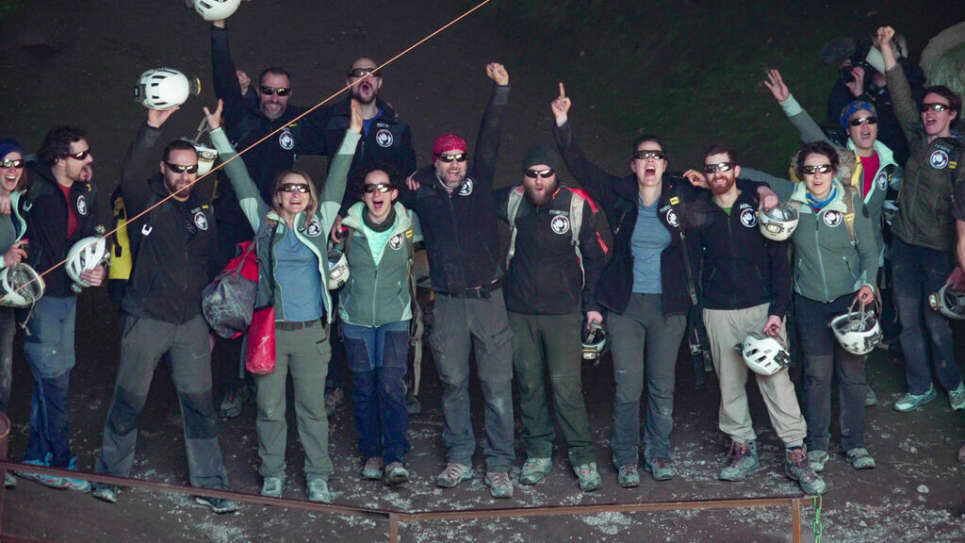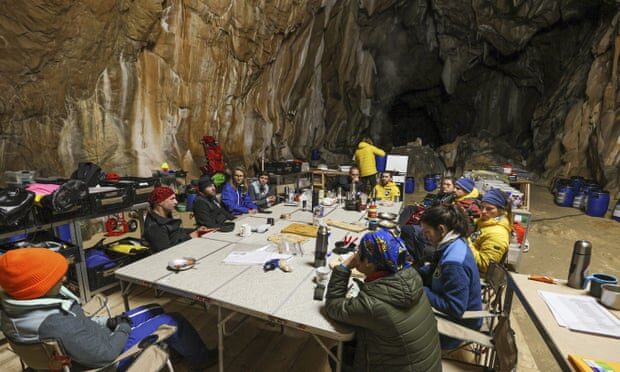
At 10:30 a.m. local time on Saturday April 24, 15 people emerged from Lombrives cave in Ussat les Bains, France, following 40 days of complete isolation from the outside world. Many of them had smiles on their faces, which... well, full credit to them. Had it been me, I can guarantee you that I would not be smiling, as the conditions down there were far from ideal.
The environment was most certainly rough, with the temperature fixed at 50 degrees F (10 degrees C) and the relative humidity pinned at an oppressive 100%. Not a single ray of sunlight leaks into this cave, requiring the team to depend exclusively on artificial lighting. And with no way to communicate with the outside world, team members lost touch with their friends, families, and the daily news cycle.
Importantly, they also lost track of time, as no clocks of any sort were allowed in the cave. For this was the point of the "Deep Time" project, organized by the Human Adaptation Institute, which is seeking to understand how humans adapt and work together to recreate "synchronization outside the usual indicators," as the group explains at its website.
When asked how long they had stayed in the cave, the team collectively figured it was around 30 days (though, as The Guardian reports, one person estimated the total duration at 23 days!). That the team had somehow lost track of 10 whole days (or more) is somewhat astounding and testament to our dependence on clocks or the day-night cycle to keep track of time. Our internal clocks, it would appear, really, really suck, and are subject to considerable drift — even across the relatively short time span of 40 days.
The €1.2 million ($1.45 million) Deep Time project included 50 different research protocols spanning a dozen scientific fields. Using sensors, a team on the outside was able to track all 15 members, following their sleep patterns, social interactions, body temperature, and other metrics. The accommodations were spartan, but not outrageously so. Images taken inside the well-lit cave show tents, coolers, fold-up tables, chairs, wooden platforms, and copious amounts of technology. Team members, some wearing parkas and beanies, can be seen doing experiments or engaged in casual discussions.
This research will hopefully shed light on the physiological and cognitive processes involved with social isolation, clock-deprivation, and the tracking of time, but there's a practical aspect to this as well. This work could ultimately lead to improved conditions for submarine crews, miners, and operators of boring machines. It could also be of benefit to future explorers on the Moon and Mars, who would likewise experience disruptions to a 24-hour day.
The organizers of the Deep Time project chose a cave setting instead of a lab because, after "years of varied studies, we have found that, in order to fully understand human skills and functioning, it is necessary to study them in a natural environment and in real life situations rather than in simulation in a small and closed space."
Remarkably, two-thirds of the participants said they would've stayed longer in the cave if they could, but some, such as Johan Francois, struggled at times, saying he had "visceral urges" to leave, as he told The Guardian. Francois kept busy by walking upwards of 6.2 miles (10 km) each day, which he did by walking in circles around the cave perimeter. Marina Lançon, one of seven women to participate in the experiment, said the experience was "like pressing pause" on her life, and she'll avoid her smartphone for at least a few more to days to avoid a "brutal" return to regular life, according to The Guardian.
Without clocks or the setting Sun, the team had to rely on bodily cues for when to go to sleep, when to wake up, and when to eat. The team tracked time not by days, but by accumulated sleep cycles. Fascinatingly, the group mostly stayed in synch, despite being divorced from "real" time.
But as the results showed, they became very poor at evaluating the length of each day. Given their 30-day estimate for the 40-day stay, the team figured that each day was about 32 hours long, on average. By the end of the experiment it was probably much worse, and probably closer to 40 hours. As for the team member who thought only 23 days had elapsed, their "day" was 42 hours on average, and again, probably even longer by the end (i.e. the temporal drift likely didn't immediately kick in).
These are wild results. It means that team members went to bed later and later each day, erring on the side of longer, rather than shorter, days. The team was in synch for the most part, but clearly some individuals experienced their own sense as to the passage of time (makes me wonder if there was dissent about when to go to bed).
How the researchers will make sense of these findings and translate them into real-world strategies will be very interesting, but one thing's for sure — I suddenly value the inexorable rising and setting of the Sun in a way I never thought possible.





Reader Comments
The magnitude of the miscalculations on the other hand is ... well, bigger than I would expect, thought. Maybe a little too big to not suspect the results, to be honest. The fact that the group stayed in sync might explain it , but it still seems excessive ( like if someone was forcing the results unnaturally :/ )
R.C.
*Apologies to Poe.
RC
'mmHg' I know what that means and is.
if there ever comes a time,in your life. when someone measures your blood pressure... would you not want them to know what the fuck they are talking about?
[Link]
if you have trouble understanding 'relative humidity' or 'millimeters of mercury ' I can help!
want to have fun? the next time someone measures your blood pressure.. ask them. "are you measuring that in inches of mercury?"
[Link]